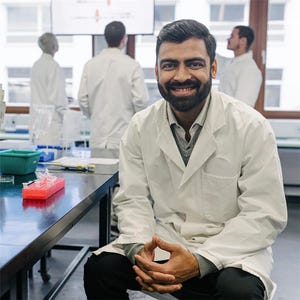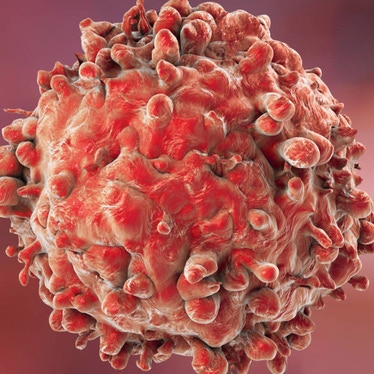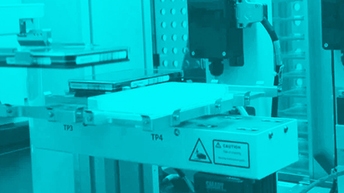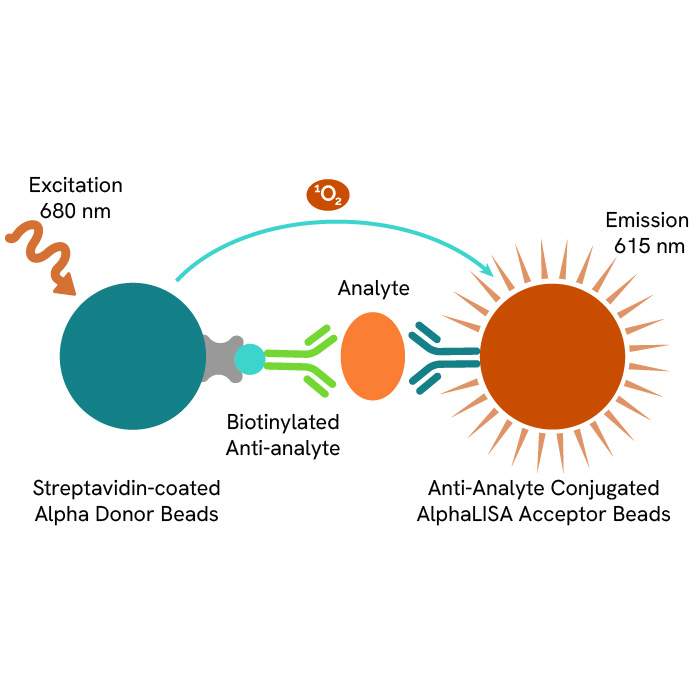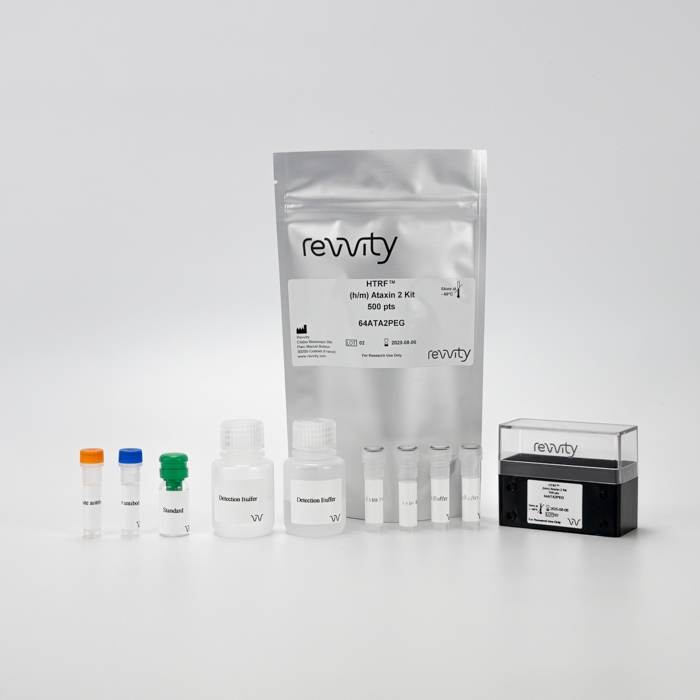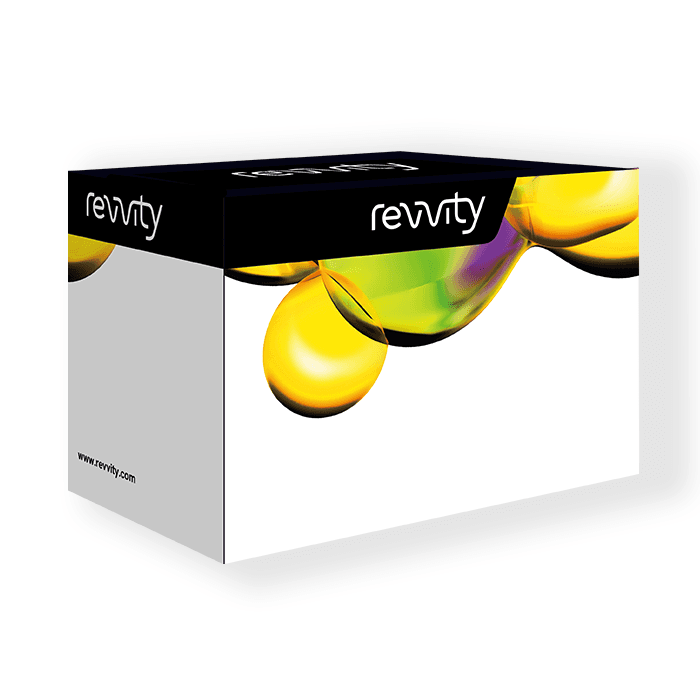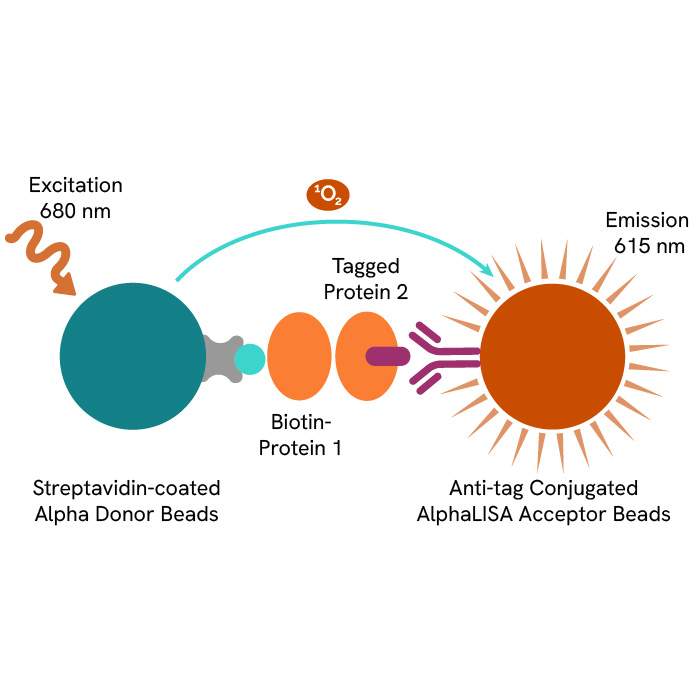Featured resources


Filters
1 - 25 of 708 Products and Services
The AlphaLISA™ Human and Mouse GFAP Detection Kit is designed for the quantitative determination of GFAP in serum, buffered solution, or cell culture medium using a homogeneous (no wash steps, no separation steps) assay.
The AlphaLISA™ Human IL-15 Detection Kit is designed for the quantitative determination of IL-15 in serum, buffered solution, or cell culture medium using a homogeneous (no wash steps, no separation steps) assay.
The HTRF Human and Mouse Ataxin 2 Detection Kit is designed for the quantitative measurement of Ataxin 2 in human and mouse cell lysates.
The AlphaLISA™ Human Amyloid beta 1-x (Aß 1-x) Detection Kit is designed for detection and quantitation of human Aß 1-x in cerebrospinal fluid (CSF), buffered solution or cell culture medium in a homogeneous (no-wash steps, no separation steps) assay.
AlphaLISA no-wash immunoassay kit for detection of human serum albumin (HSA) in urine, buffered solution, or cell culture medium.
The AlphaLISA™ Human Interleukin 13 Detection Kit is designed for detection and quantitation of human IL-13 in serum, buffered solution or cell culture medium in a homogeneous (no-wash steps, no separation steps) assay.
The AlphaLISA™ Human TGF-β1 Detection Kit is designed for detection and quantitation of human TGF-β1 (hTGF-β1) in human serum, plasma, and cell culture supernatants using a homogeneous AlphaLISA assay (no wash steps). The assay shows negligible cross-reactivity with human hTGF-β2 and hTGF-β3.
The AlphaLISA™ Human CXCL1/GROα Detection Kit is designed for detection and quantitation of human CXCL1/GROα in cell culture media or serum using a homogeneous (no-wash steps, no separation steps) assay.
The AlphaLISA™ immunoassay kit for human kappa light chain enables the quantitative determination of human kappa light chain in serum, buffered solution, and cell culture supernatants using a homogeneous AlphaLISA assay (no wash steps).
The AlphaLISA HIV p24 Biotin-Free Detection Kit is designed for the quantitative detection of HIV p24 in serum, cell culture medium, and other samples types using a homogeneous (no wash steps, no separation steps) assay. The biotin-free kit uses anti-DIG (anti-Digoxin) Donor beads instead of streptavidin Donor beads, which makes the kit compatible with high-biotin culture media and other sample types that contain high levels biotin (including brain/liver tissue extracts, milk and eggs).
The AlphaLISA™ Human Granulocyte/Macrophage Colony-Stimulating Factor (GM-CSF) Detection Kit is designed for detection and quantitation of human GM-CSF in serum, buffered solution or cell culture medium in a homogeneous (no-wash steps, no separation steps) assay.
The AlphaLISA™ Human Matrix Metalloproteinase-1 (MMP1) Detection Kit is designed for detection and quantitation of human MMP1 in serum, buffered solution or cell culture medium in a homogeneous (no-wash steps, no separation steps) assay. The kit was designed to detect both MMP1 and pro-MMP1.
The AlphaLISA™ immunoassay kit for detection and quantitation of human Amyloid β 1-42 (Aβ 1-42) in cerebrospinal fluid (CSF), cell culture supernatants, and other sample types allows for fast, reproducible, and sensitive detection without the need for time-consuming wash steps or complicated assay development.
The AlphaLISA™ immunoassay kit for human cytotoxic T-lymphocyte-associated protein 4 (CTLA-4) enables the quantitative determination of human CTLA-4 in buffered solution and cell culture supernatants using a homogeneous AlphaLISA assay (no wash steps).
The AlphaLISA™ immunoassay kit for human SHP-2 enables the quantitative determination of human Src-homology domain-2 containing protein tyrosine phosphatase 2 (SHP-2) in buffered solution, cell culture media, and cell lysates using a homogeneous AlphaLISA assay (no wash steps).
AlphaLISA no-wash immunoassay kit for detection and quantitation of human Frataxin (hFXN) in cell and tissue lysates.
The AlphaLISA™ immunoassay kit for human NT-proBNP enables the quantitative determination of human N-terminal prohormone of brain natriuretic peptide (NT-proBNP) in buffer, serum, or plasma using a homogeneous AlphaLISA assay (no wash steps).
The AlphaLISA™ Human IL-31 Detection Kit is designed for detection and quantitation of human interleukin 31 in cell culture media using a homogeneous (no-wash steps, no separation steps) assay.
The AlphaLISA™ immunoassay kit for human HLA-E enables the quantitative determination of human MHC class I antigen E (HLA-E) in buffered solution, cell culture supernatants, and cell lysates using a homogeneous AlphaLISA assay (no wash steps).
The AlphaLISA™ Human IL-17F Detection Kit is designed for detection and quantitation of human interleukin 17F in cell culture media or serum using a homogeneous (no-wash steps, no separation steps) assay.
The AlphaLISA™ immunoassay kit for human CD117 enables the quantitative determination of human CD117 in serum, buffered solution, and cell culture supernatants using a homogeneous AlphaLISA assay (no wash steps).
The AlphaLISA™ immunoassay kit for human AST enables the quantitative determination of human aspartate transaminase (AST) in buffered solution, cell culture media, and serum using a homogeneous AlphaLISA assay (no wash steps).
The AlphaLISA™ immunoassay kit for human interleukin 1 receptor-associated kinase 4 (IRAK4) enables the quantitative determination of human IRAK4 in buffer, lysates, and tissue homogenates using a homogeneous AlphaLISA assay (no wash steps).
This kit is designed for the detection of binding activity between human FCGR3A (176Phe) and human IgG Fc fragment using a homogeneous AlphaLISA™ assay (no wash steps). This assay can facilitate the design and development of antibody therapetics by using competitive binding.
The AlphaLISA™ Human Insulin-like Growth Factor 1 (IGF1) Detection Kit is designed for detection and quantitation of human IGF1 in serum, buffered solution or cell culture medium in a homogeneous (no-wash steps, no separation steps) assay.







